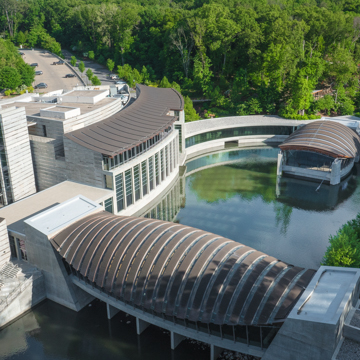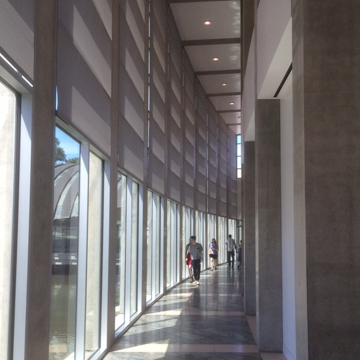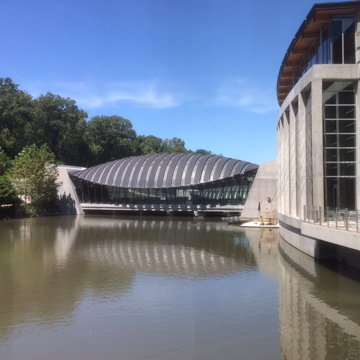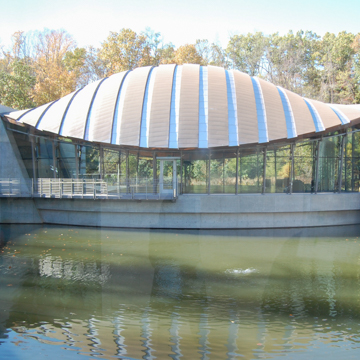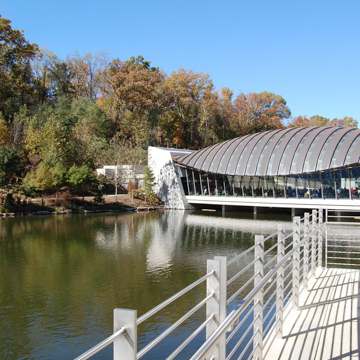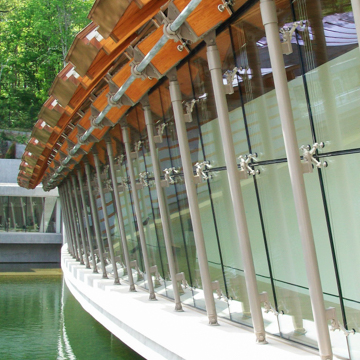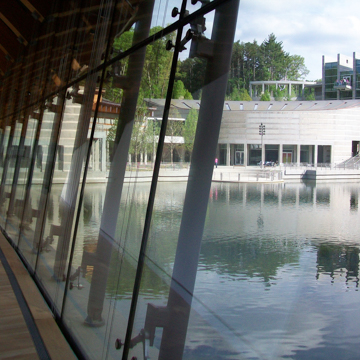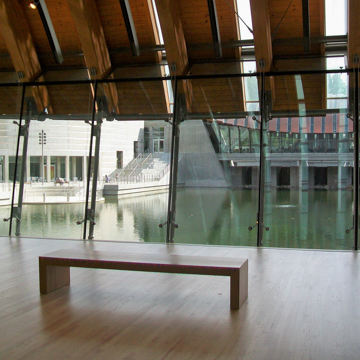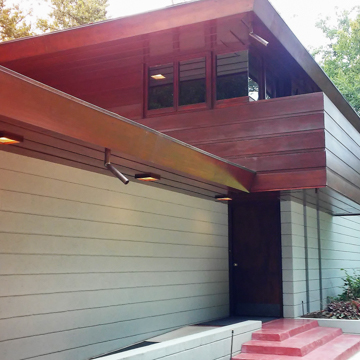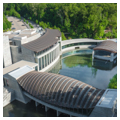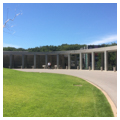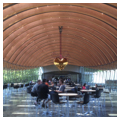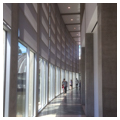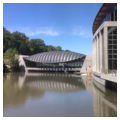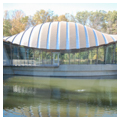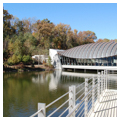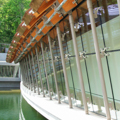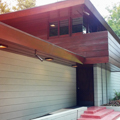Crystal Bridges Museum of American Art is the culmination of Walmart heiress Alice Walton’s desire to make Bentonville, and the region, a recognized fine art destination. Walton’s selection of Safdie came after her visit to the architect’s Skirball Museum of 1996, located in Los Angeles. There are similarities between the two: both are configured as formal accretions in the landscape, the major volumes hinged and linked across varying terrain. Both employ cast-in-place concrete as the primary finish material, both inside and out, with horizontal wood strips (cypress at Crystal Bridges) covering the major concrete pour joints. As approach to this museum is generally from above (after arrival at a columned propylaeum), the roofs become a major part of the experience. Metal clad (sometimes alternating with skylight segments), they are cable-hung from heavy concrete masts positioned at the ends of each major volume. The overall effect is pleasingly, even paradoxically organic; the composition is woven into the trees and intervening waterway like a forest creature at rest. The major interior gallery spaces are arched over by a series of complex curved laminated beams and are enclosed mostly by a web of glass, affording stunning views into the surrounding landscape. The glassy enclosures proved problematic for the display of artwork and necessitated the insertion of a secondary, opaque enclosure in most of the galleries. Housing a world-class collection of American paintings and sculpture, Crystal Bridges is an elegant vessel for the display of its contents. And while it includes some structural gymnastics, the generally understated exhibit spaces never compete for attention with the art.
The acquisition in 2013 of Frank Lloyd Wright’s 1954 Bachman-Wilson House, moved to the museum grounds from its original site in New Jersey and reassembled near the museum’s south entrance, signals a bold foray into cultural stewardship, offering testimony to the museum’s commitment to architecture, as well as to painting and sculpture. The surrounding landscape, as important as the museum structure itself, is carefully choreographed to afford the best views both from the building into the landscape and from the landscape toward the building. Several marked trails loop around the museum campus, and a growing inventory of significant contemporary sculptures in the environment enriches the collection and the visitor’s experience.









